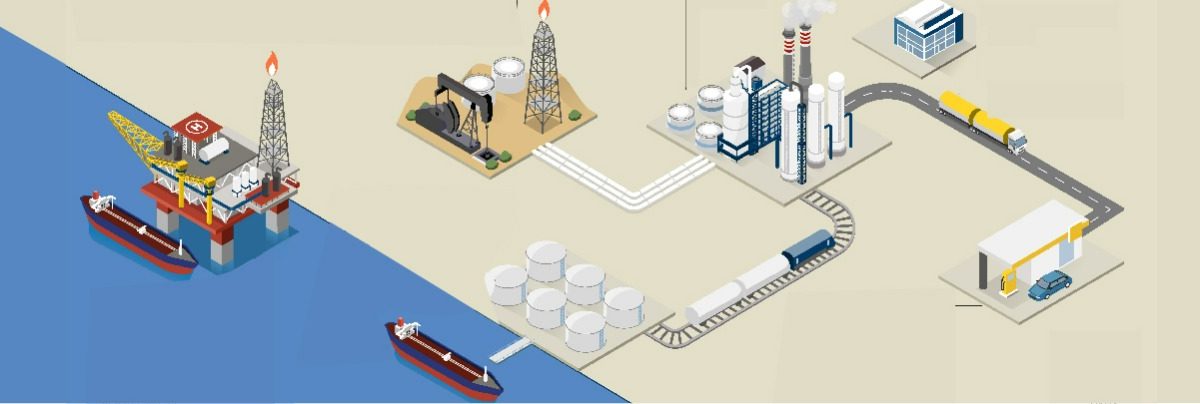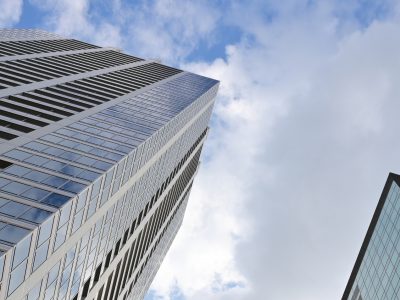Huge economic developments and technological advancements co-exist with equally troubling issues and problems. Pundits rate technology, globalisation and climate change as the three largest accelerating forces of the 21st century. Automation, artificial intelligence (AI), the Internet of Things (IoT) and robotics are transforming the way resources are produced and consumed. On the flip side, the bewildering array of changes in all walks of life has spawned newer risks and challenges. Growing economic uncertainty, geopolitical instability, regulatory environment, rapid advances in technology, business disruptions, increased volatility of exchange rates and commodity prices, corruption and terrorism are some of the larger factors contributing to a more challenging economic environment. Contemporary social challenges include population growth, sharp inequalities due to disparities in income and wealth distribution, human rights violations, xenophobia, alarmingly large levels of unemployment, forced migration of people and an increase in the spread of diseases.
Environmental concerns, at the top of global risks in any study, include climate change and global warming, extreme weather events, loss of biodiversity, chemical pollution, changing land use patterns, desertification and ocean acidification. We are living in an “era of unprecedented challenges”, and compulsorily need to “embrace complexity” to be able to find sustainable solutions to save the planet and humanity, according to Jeffrey Sachs in The age of sustainable development. Business organisations are perceived as the drivers of economic progress. They have a major role in effectively managing all the enterprise risks in the economic, social and environmental spheres, to meet their strategic objectives and stakeholder expectations.
ERM is the process by which organisations identify, measure, manage and report on all key risks. It is intended to help organisations achieve their strategic objectives, increase value to stakeholders, minimise surprises and losses, and capitalise on opportunities. Sustainability endeavours to balance economic growth with environmental preservation and social inclusiveness. The subjects of risk management, sustainability and the oil and gas industry are too vast to be covered in a single paper. The objective of the article is to highlight the key aspects covering the domains and the imperatives for their integration and adoption of a holistic approach.
Imperative Of Enterprise Risk Management
Risk management is “the process whereby organisations methodically address the risks attached to their activities to achieve sustained benefit within each activity and across the portfolio of all activities,” according to the Institute of Risk Management’s professional standards. The Global Risks Report 2018 of the World Economic Forum has identified 30 risks, spanning five domains: Economic, Environmental, Geopolitical, Societal and Technological. A clear need exists for a robust risk management framework to effectively manage the diverse risks. ERM enables management to effectively deal with uncertainty and associated risk and opportunity, enhancing the capacity to build value
A Brief Overview Of Sustainability
“Sustainability” has evolved to include environmental, social inclusion and governance dimensions, and is fast becoming an overarching framework embracing all aspects of human existence. The three dimensions – social, economic and environmental – are widely referred to as the “triple bottom line” of business. Several factors on a global scale, such as globalisation, environmental degradation, population growth, resource depletion, consumerism, social inequality and technological explosion, have contributed to the rise of the notion of sustainability
The Earth is not in a position to handle the double-whammy of a growing population and increased economic activity leading to the disastrous state of our natural environment. On growing inequalities in society, Oxfam’s report Reward work, not wealth (2018) laments that 82 per cent of the wealth generated in 2017 went to the richest 1 per cent of the global population, while the 3.7 billion people constituting the poorest half of the world saw no increase in their wealth. Credit Suisse (Global Wealth Report, 2016) points out that “while the bottom half (of the world population) collectively owns less than 1% of total wealth, the wealthiest top 10% own 89% of all global assets”. Confronted with such challenges on multiple fronts, several experts have observed that the current global economic model is the root cause of many of the present-day ills and therefore unsustainable. Sustainable development gained wide currency with the publication of the Brundtland Commission Report (Our common future, 1987), defining sustainability as “Development that meets the needs of the present without compromising the ability of future generations to meet their own needs”. Sustainability is expected to address many of the shortcomings of the current economic, political and business systems and provide for a more holistic, balanced and integrated approach.
The role of business organisations in managing sustainability Business organisations are big economic entities and have footprints in all domains. A study in 2016 by Global Justice Now found that: (a) of the world’s top 100 global economic entities, 69 are corporations; (b) Walmart, Apple and Shell are richer than Russia, Belgium and Sweden; and (c) the world’s top ten corporations have a combined revenue of more than the 180 “poorest” countries. In 2016, the world’s 500 largest companies generated $27.7 trillion in revenues and $1.5 trillion in profits (Fortune Global 500 Rankings, 2017). Business organisations are today facing a new risk reality, as they are increasingly being held accountable for global climate change, fraud, corruption, pollution, labour abuse and more.
For failing to act responsibly, a company will be punished in public opinion, and the environment and society will suffer along with the company’s brand reputation. Large corporations now need to take much more responsibility for development than ever before, as they have become dominant institutions on all dimensions of sustainability. The major benefits of managing sustainability are improved brand image, greater pricing power, cost savings, employee engagement, innovation, new sources of revenue, effective risk plan and enhanced stakeholder relations. The Business & Sustainable Development Commission (Better business, better world, 2017) emphasised the “need to strike out in new directions to embrace more sustainable and inclusive economic models”, and pointed out that companies could gain at least $12 trillion by developing sustainable business models. As sustainability is essentially long-term, business risks must be fully integrated with sustainability risks (extending beyond economic risks to the spheres of environment and social risks), to ensure holistic performance.
Oil And Gas Industry: Risks And Sustainability Challenges
Oil and gas companies are behemoths, with huge economic impacts. The energy landscape is constantly changing with several technical and geopolitical forces at work: the growing share of renewables in the energy mix, the rise of shale and the growing exports of LNG and oil from the US, and Asian refiners looking beyond the Middle East to diversify their sourcing of crude (S&P Platts, 2017). Factors such as volatility in energy prices, clamour for clean energy initiatives; the shift towards gas; digitalisation; evolving mobility solutions; cost pressures; changing modes of power generation and distribution; and national, state-level and international regulations such as the Paris climate accord are expected to exert huge pressure on the industry and may cause disruptions.
The oil and gas industry (OGI) is associated with major environmental hazards, according to the World Bank Group, which include:
(a) Pollution at all stages of the oil and gas lifecycle, wastewater, gas emissions, noise generation, spills, solid waste and aerosols generated during operations and transportation;
(b) Intensification of the greenhouse effect, acid rain, poorer water quality and groundwater contamination;
(c) Biodiversity loss; and
(d) Energy efficiency and resource conservation, losses due to venting and flaring.
Environmental incidents in the OGI, with huge impacts, are too well known. These include the Exxon Valdez 40,000 MT crude oil spill in Prince William Bay, Alaska, in 1989 and BP’s 2010 explosion of Deepwater Horizon in the US.
Similarly, on the safety front, incidents such as the massive explosion at the BP Texas City refinery, and the Buncefield Oil Depot disaster in the UK in 2005, have revealed the soft underbelly of the industry. Other risks (UNEP FI’s Environmental and Social Risk Briefing, 2016) include security of supply and operations, human rights violations, revenue transparency, sustainable community development, community health and safety, and impacts on vulnerable people. GRI’s Sustainability reporting guidelines & oil and gas sector supplement (2012) add the following: responding to growing energy demands, contributing to national economic and social development, developing lower-carbon energy sources, transparency, and asset integrity and process safety. From the numerous sustainability issues confronting an organisation, materiality analysis can help companies identify relevant issues that can materially impact its performance or its stakeholders.
The key material sustainability issues for the sector identified by the industry associations are (Oil and gas industry guidance on voluntary sustainability reporting, IPIECA, 2015):
BP had identified the following as material sustainability issues and reported on them (BP’s Sustainability Report, 2016):
It can thus be seen that the nature of risks in the OGI is very complex, diverse and with huge impacts. An integrated business approach, with sustainability at the core of strategy, is essential.
Integrating ERM and sustainability The multiplicity of risks and the enormity of the challenges faced by the OGI perforce call for a concerted effort, right from factoring in all the risks and developing appropriate strategic responses. This eventually mandates a coherent and unified strategy to address the risks effectively. Any piecemeal or compartmentalised approach will only lead to suboptimal performance. The Committee of Sponsoring Organizations of the Treadway Commission (COSO) (Demystifying sustainability risk, 2013) also suggests such an approach. While business organisations are quite adept at identifying conventional business risks, they seem to be lacking in addressing sustainability risks. Pursuing an integrated approach to risk management and sustainability requires an appropriate governance structure. Reliance can be placed on the global excellence models for this purpose. The EFQM Excellence Model (2013), given below (Figure 3), is commended as a holistic tool for developing and delivering a stakeholder-focused sustainability strategy. The Malcolm Baldrige Model for Performance Excellence, widely used in the US and many other countries, is also structured on similar elements.
The objective of the above discussions is to integrate the principles and concepts of sustainability with core business processes and mainstream decision-making in business. In fine, an excellent journey in sustainability starts with visionary and committed leadership; is rooted in ethics and values; engages with the relevant stakeholders; identifies all the risks an organisation faces – both internal and external; charts a viable sustainability strategy with clear objectives and targets; provides the required resources; partners with appropriate entities to achieve synergy, scale and speed; implements systems and processes; learns and innovates, and drives results to achieve the desired performance.
The Way Forward For The Oil And Gas Management
We are living in a complex and resource-constrained world. The OGI faces daunting risks, some of them threatening its survival. The solution lies in the holistic management of risks, both from the enterprise and sustainability points of view. Such an integrated approach alone can ensure efficient management of risks and uncertainties, besides enabling the organisations in the industry to seize opportunities and help in achieving a successful and sustainable energy transition.














